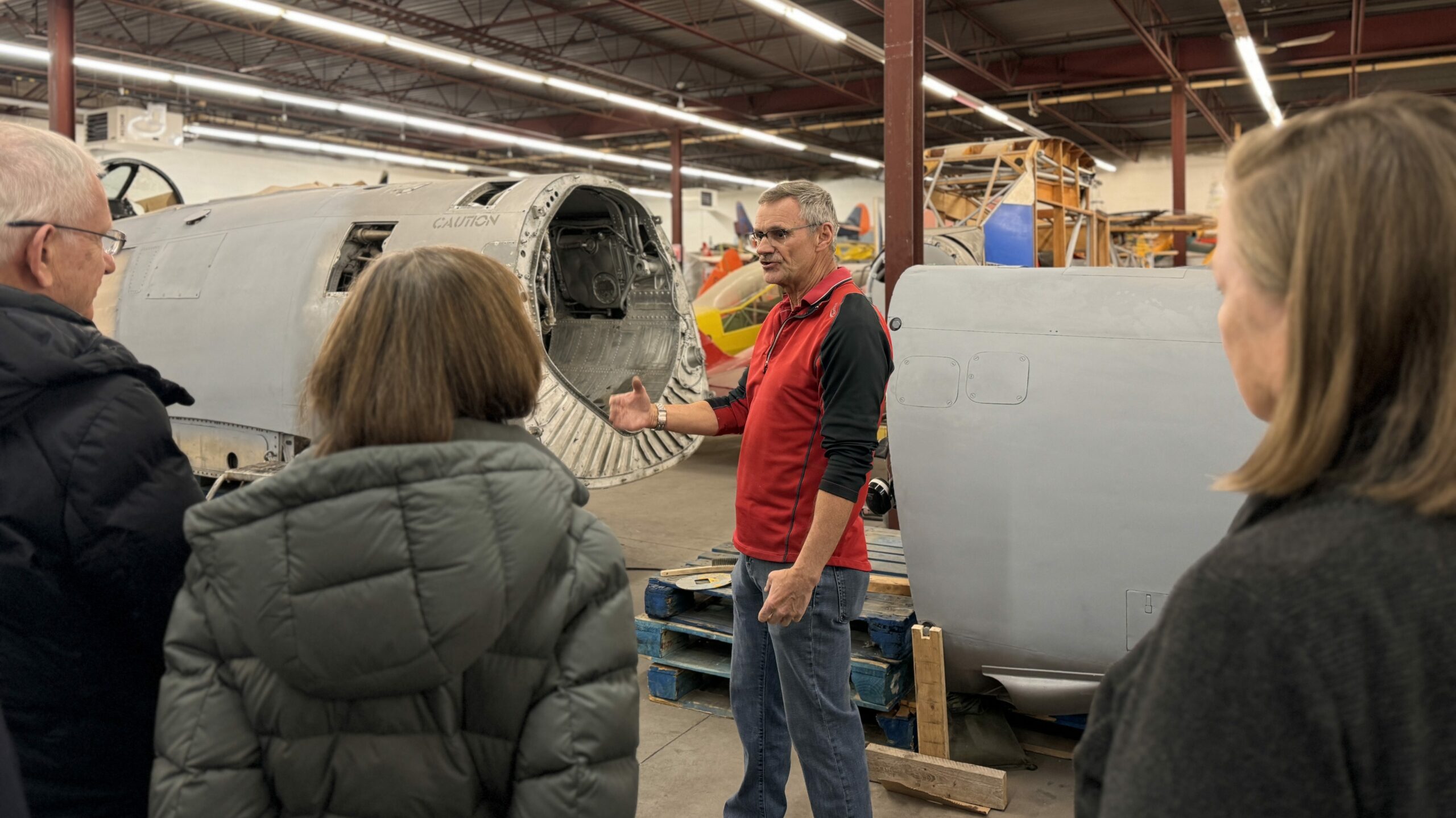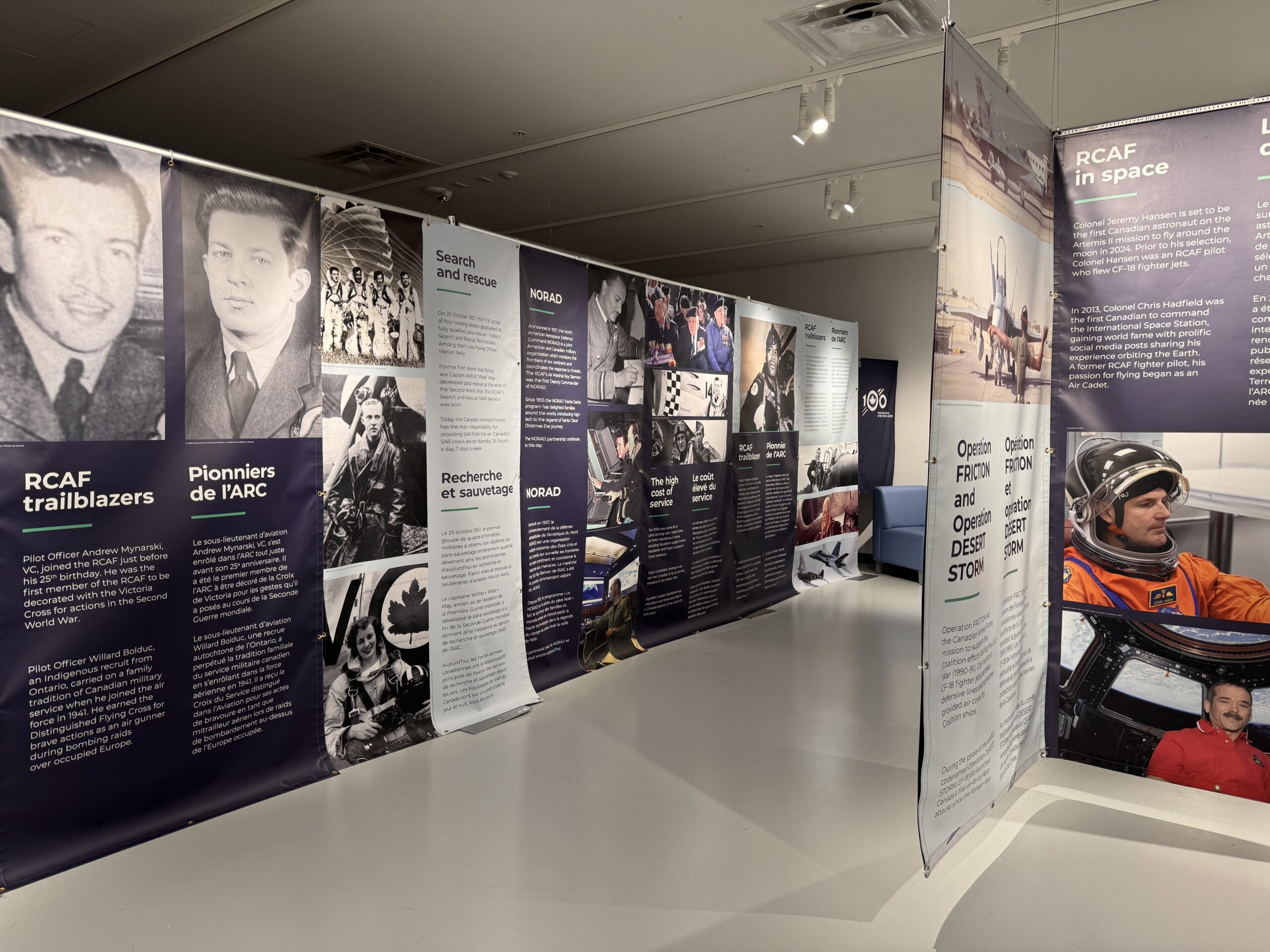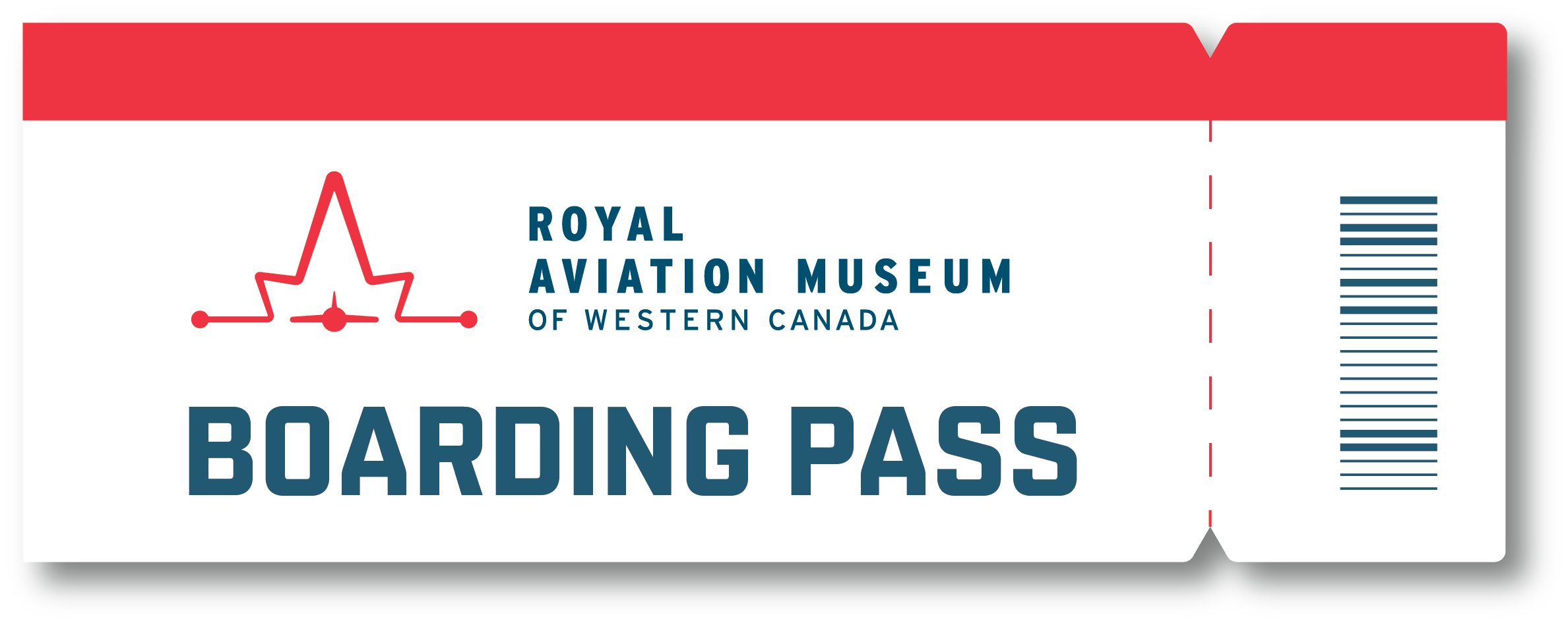March 13, 2023
This past weekend’s Academy Awards got us thinking that a lot of the aircraft in our museum are award-worthy. So we created our own set of award winners based on some of the famous Oscar categories!
Best Performance: The CF-104 Starfighter

A fan favourite for visitors, the CF-104 Starfighter is one of the most iconic and best-performing Canadian-manufactured military aircraft of all time.
Its Orenda J79-OEL-7 engine was capable of 15,800 pounds of thrust with the afterburner. It was an aircraft built for a nuclear strike, as it could slice through low-level turbulence. To this day, the Starfighter is the fastest RCAF aircraft of all time, setting many altitude and speed records. It is one of the few aircraft in history to have held three world records simultaneously for speed, time to climb, and altitude.
It’s definitely got us seeing stars.
Best Original Score: The Stinson Reliant
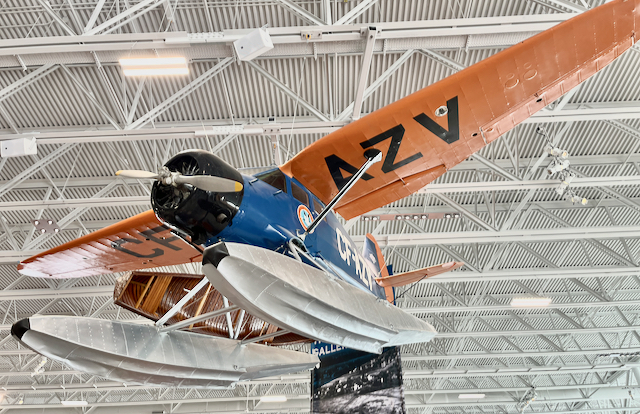
We’ve become very *reliant* on hearing this aircraft buzz the hangar floor every hour on the hour.
The Stinson is one of six suspended aircraft in our museum and if you’ve ever been here at the top of the hour, you’ll hear it fly overhead. Or, that’s what it sounds like, thanks to the realistic audio effect designed by PSB Integration.
If aircraft could speak, Stinson SR-8CM, CF-AZV, would recount memories spanning almost three decades that involve numerous owners, operators, maintenance staff, and places it has visited. The stories are many. Originally purchased in 1936 by Canadian Airways, this workhorse of a bush plane was registered to Canadian Pacific Airlines in 1942.
Over the years, many destinations familiar to those who flew the northland appeared in the journey log: Flin Flon, Lingman Lake, Lac du Bonnet, Ilford, Churchill, Maguse River, Gold Pines, Bending Lake, Fort Reliance, and Fort Smith, to name just a few.
Best Costume Design: The Douglas A-26B Invader
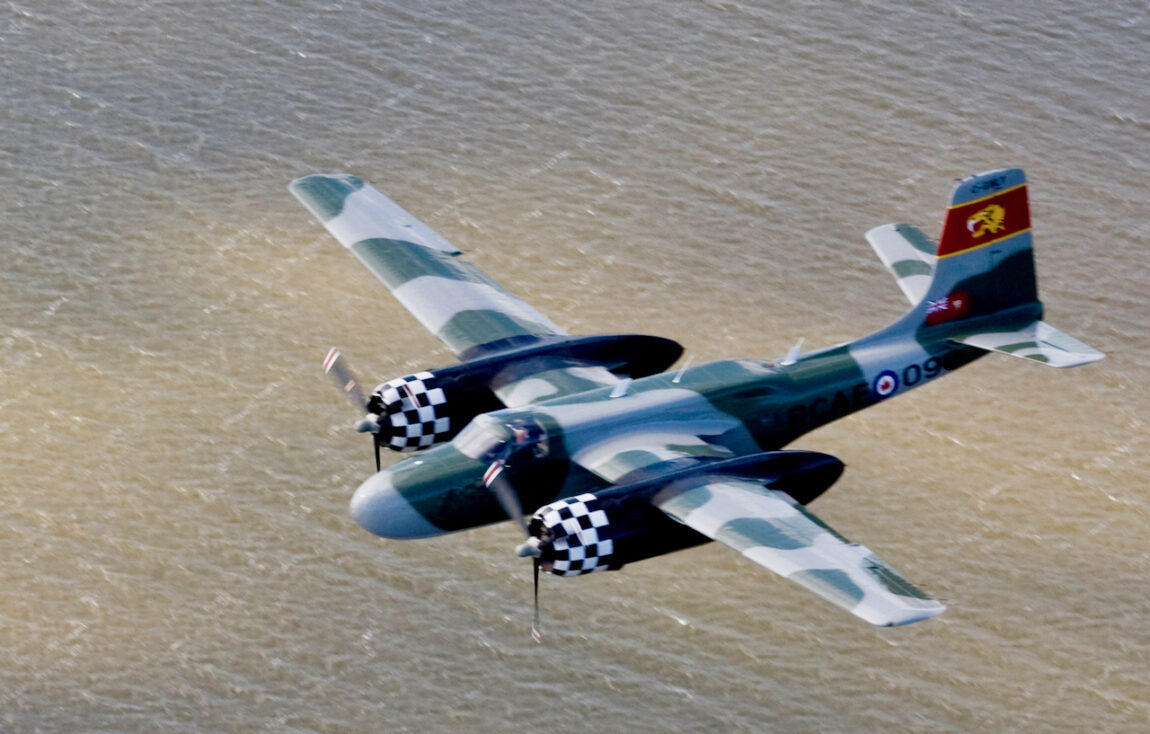
The Douglas A-26B Invader is, without a doubt, the most visually interesting aircraft in our collection. For 15 years, owner/pilot Ross Robinson flew in airshows, which explains its unique livery costume.
Introduced by Douglas Aircraft in 1943, the A-26 Invader was designed as a light bomber and ground-attack aircraft. A fast and agile aircraft, the A-26 could carry up to 2,700 kilograms of bombs or be fitted with 6-8 .50 calibre M2 machine guns in the nose and rockets under the wings for ground attack.
Though it never flew with the RCAF, the Invader displays the air force logo and tail number 098, a nod to the “Trail of 98” in Yukon Territory. Back in the 1970s, this aircraft operated as Invader 7 out of Air Spray’s base in Whitehorse, YT and pilots who flew her requested a name befitting her time there. The reference to the Trail of 98 was chosen for its significance during the Klondike gold rush of 1898. The aircraft also bears the Manitoba flag and markers to commemorate the F-86 Sabre of the 439 Fighter Squadron.
Best Visual Effects: The Ghost of Charron Lake
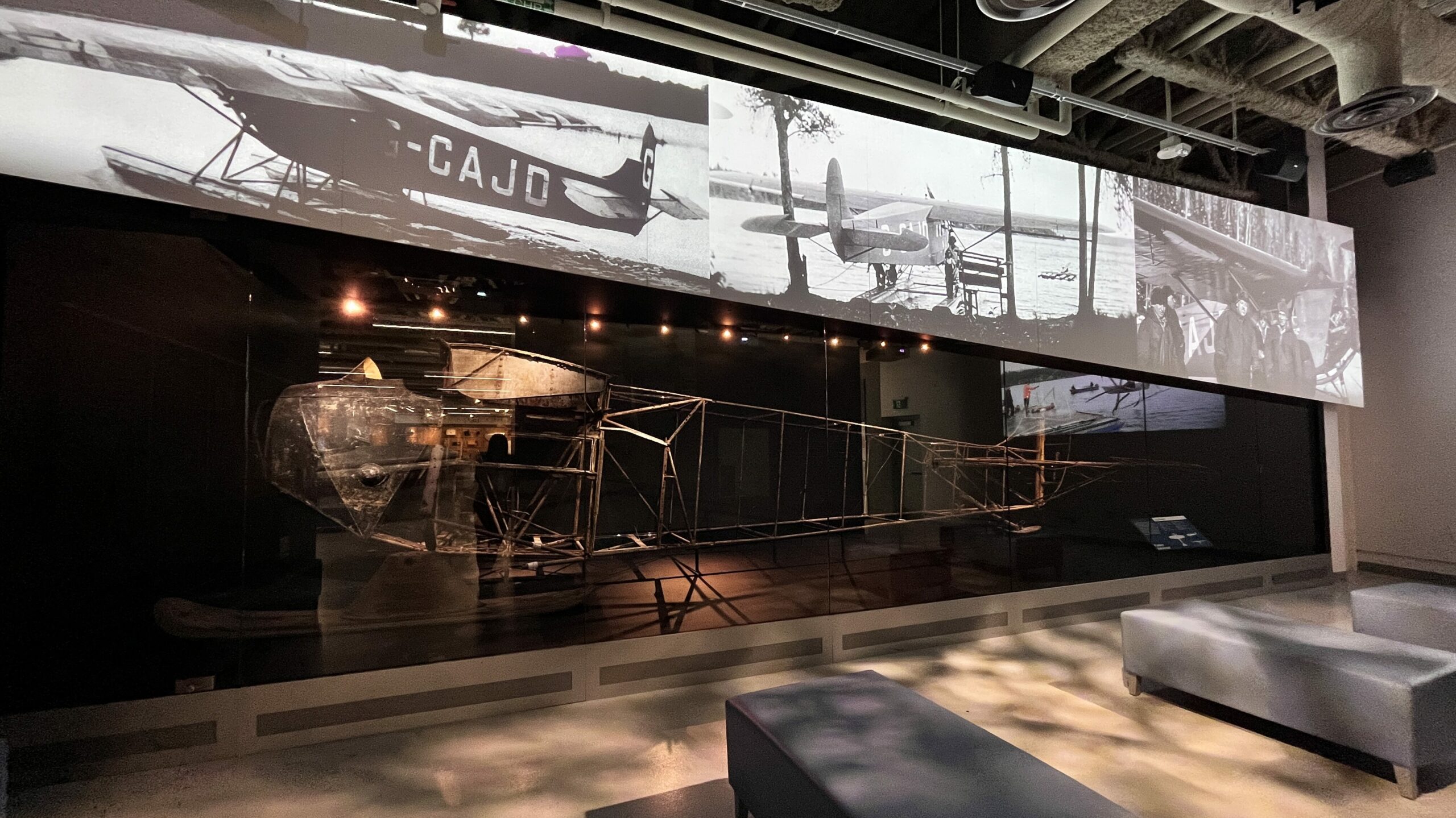
Our hats go off to Reich+Petch, Kubik Maltbie, EOS Lightmedia, Centric Productions, Country Workhouse, and PSB Integration for their outstanding work on our signature exhibit, The Ghost of Charron Lake.
From the ghostly underwater setting of the display to the moving audio-visual components, watching the story of this aircraft, the Fokker Standard Universal (G-CAJD), told through a video produced by Centric Productions is a must-see for any visitor.
In short, during a supply run in 1931, its crew had to make a landing on a frozen lake to wait out a winter storm. As the pilot, Stuart McRorie, came to a stop, the nose of the plane broke through the ice. McRorie and his flight engineer, “Slim” Forrest made it out safely and were eventually rescued.
As the ice was breaking up the next spring, the rest of the plane sank below the surface and floated to the bottom of the lake. A 30-year search for The Ghost came to a triumphant close in July of 2005 when divers finally located the aircraft.
For years, what remained of the aircraft sat in storage while plans were made to display it in our new museum. We’re delighted to finally share the story of this aircraft with visitors.
Best International Feature: Junkers Ju 52/1m
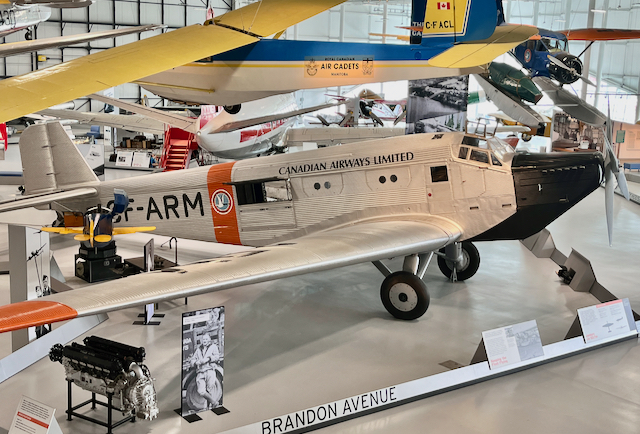
When the German-made Canadian Airways Limited Junkers Ju 52/1m, registered CF-ARM, arrived in Canada it was not only the largest airplane in the country but the largest single-engine aircraft in all of North America.
With a single engine, the “Flying Boxcar,” as it became known in Canada, was light enough to land on enormous specially designed pontoons.
With its capacity of nearly 8,000 lbs, CF-ARM regularly carried oversized loads, including mining equipment and cattle, from the company’s Brandon Avenue Air Base on the banks of Winnipeg’s Red River.
Best Production Design: Norway House Gallery
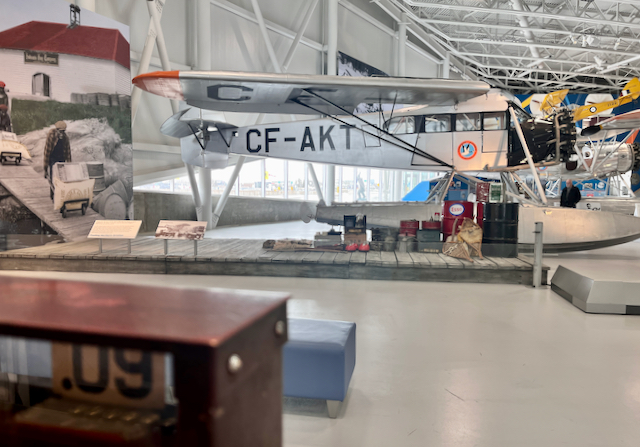
We’d be remiss if we didn’t include our Norway House gallery in this list. The immersive way in which it explains this community’s integral role in opening up the north is a delightful addition to our museum.
Located 465 kilometres (280 miles) north of Winnipeg on the banks of the Nelson River, Norway House has long been an important transportation hub. In the 1920s, bush planes began carrying passengers, mail, and other cargo in the region, driving the rapid expansion of trade, exploration, and government services across northern Manitoba. Today, Manitoba’s “Gateway to the North” is home to nearly 8,000 residents of Cree, Métis, and other diverse backgrounds – a testament to the enormous impact of aviation on communities throughout the province.
Featured in this gallery is the Fairchild 71C, CF-AKT and stories of notable aviation figures like Tom Lamb, Lorna deBlicquy, and Tommy York.
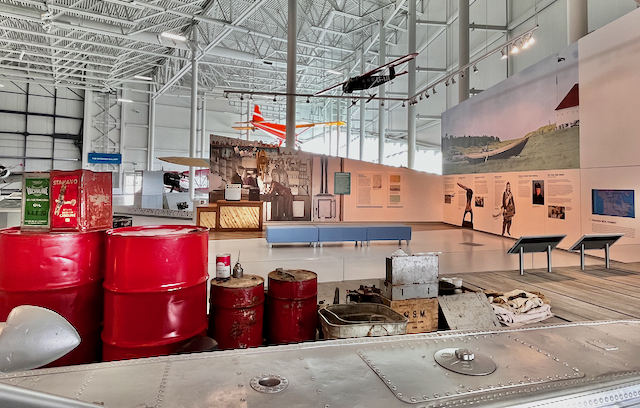
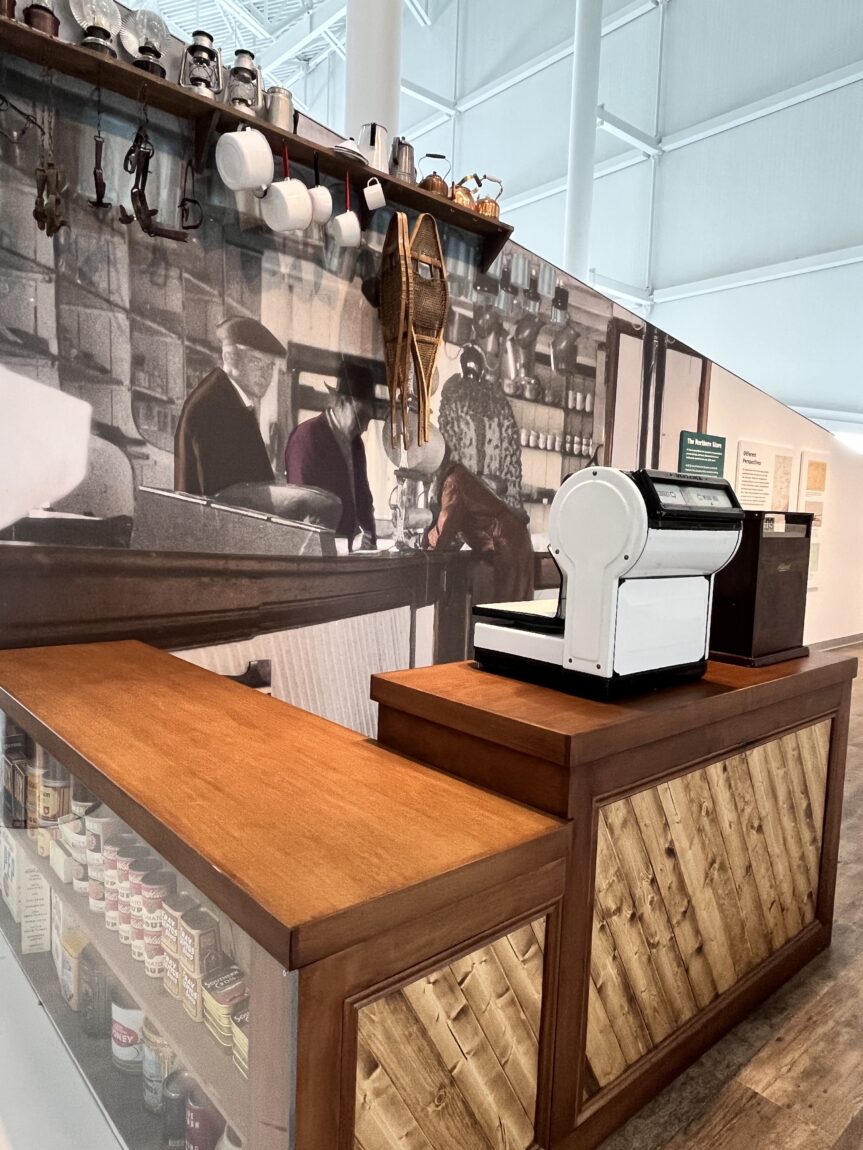
And that’s a wrap on our 2023 Aviation Academy Awards!

